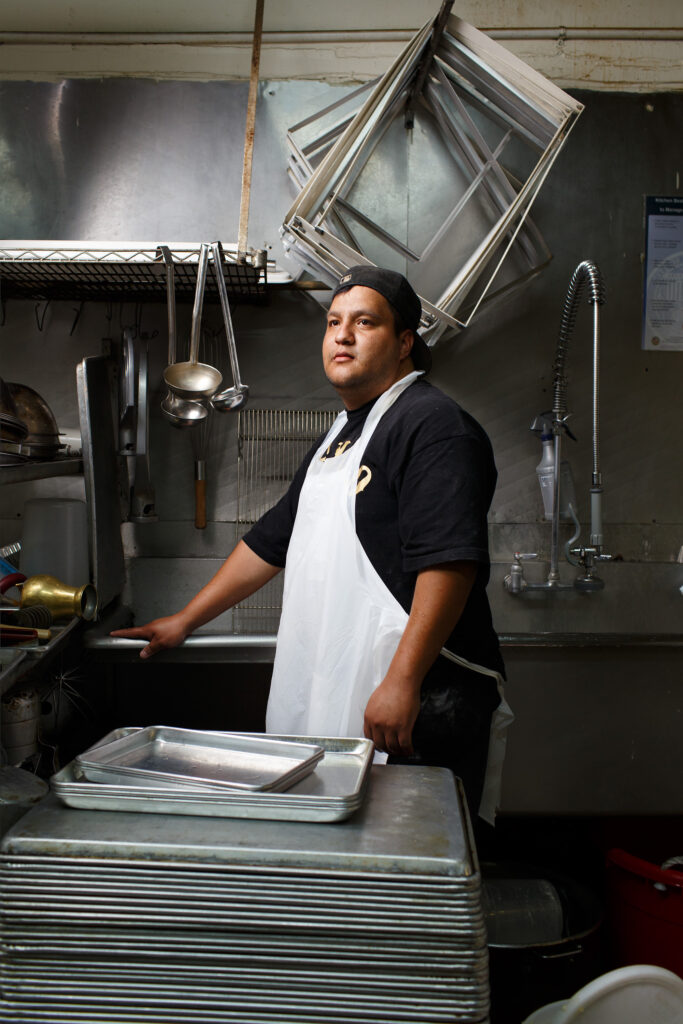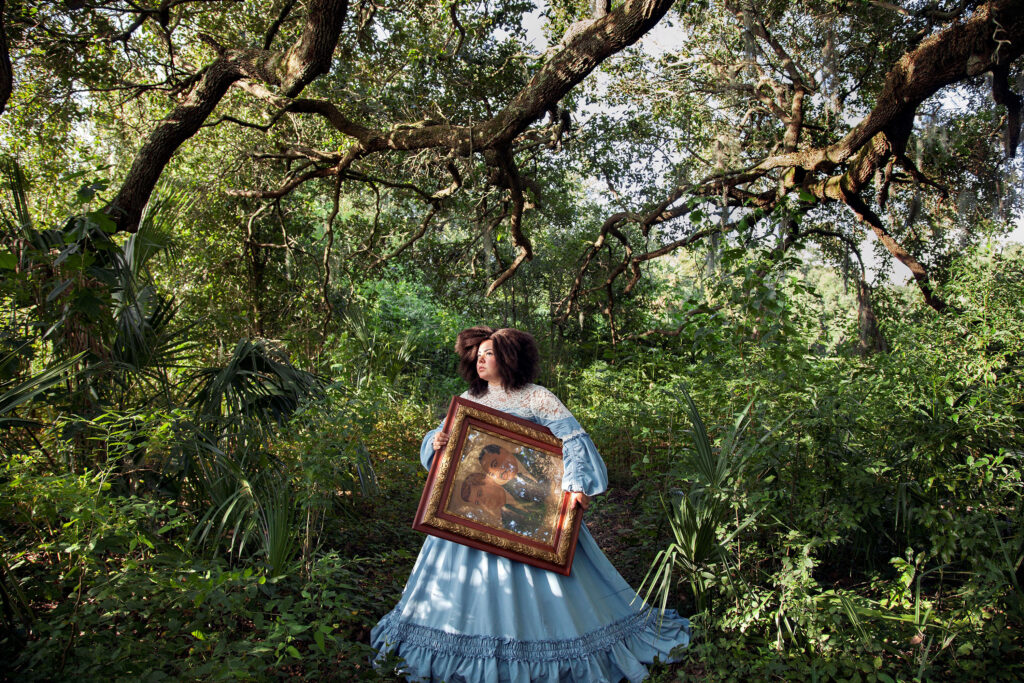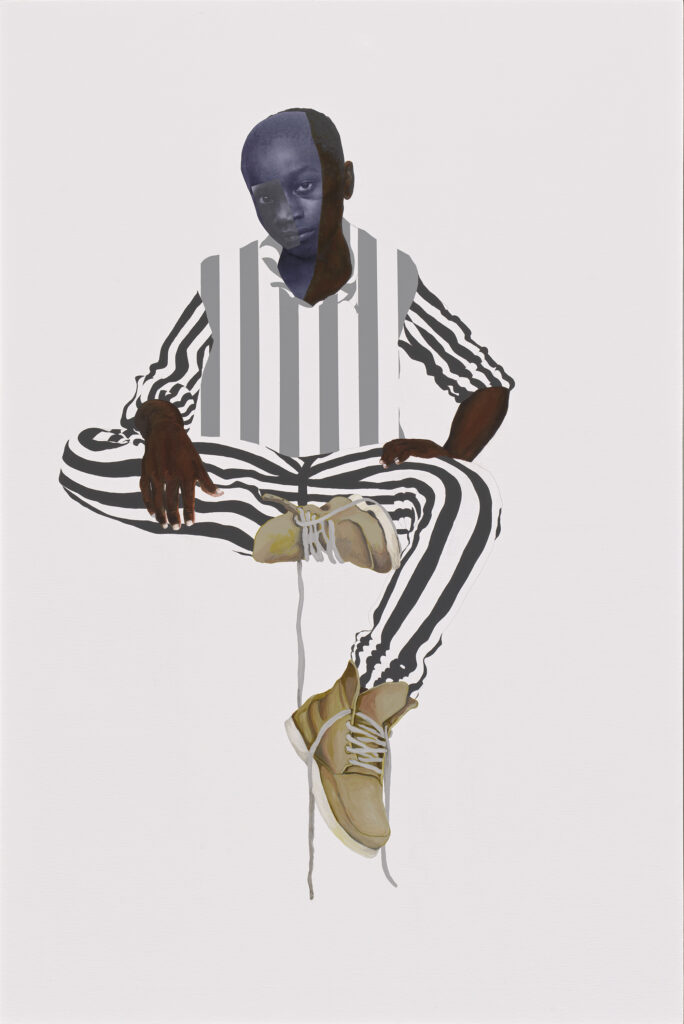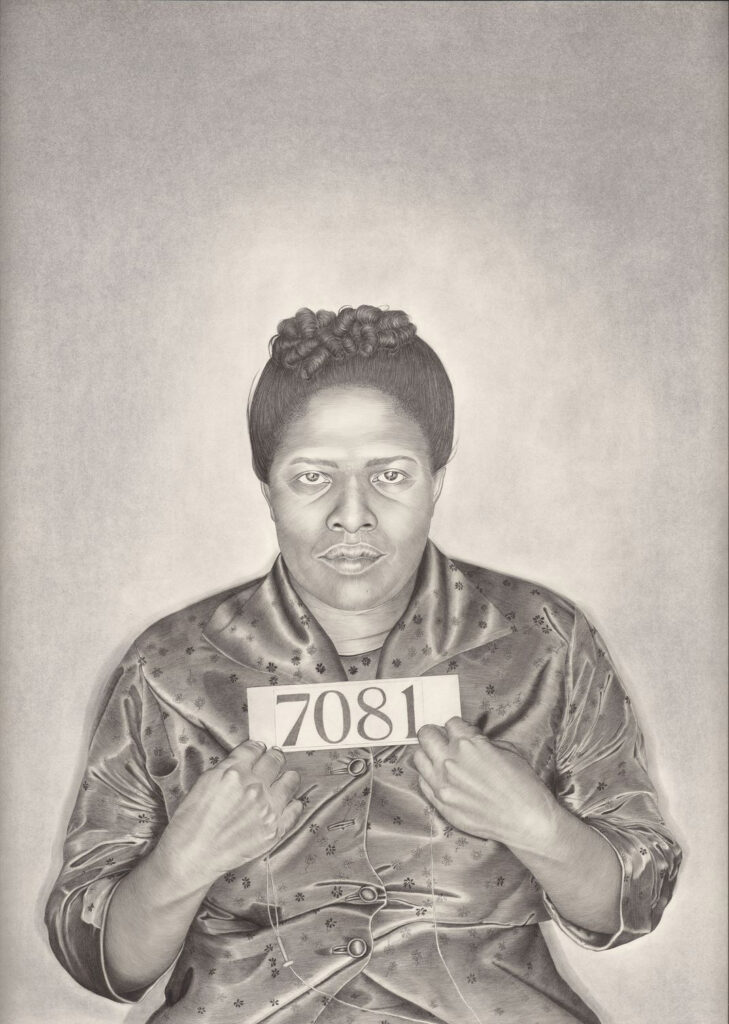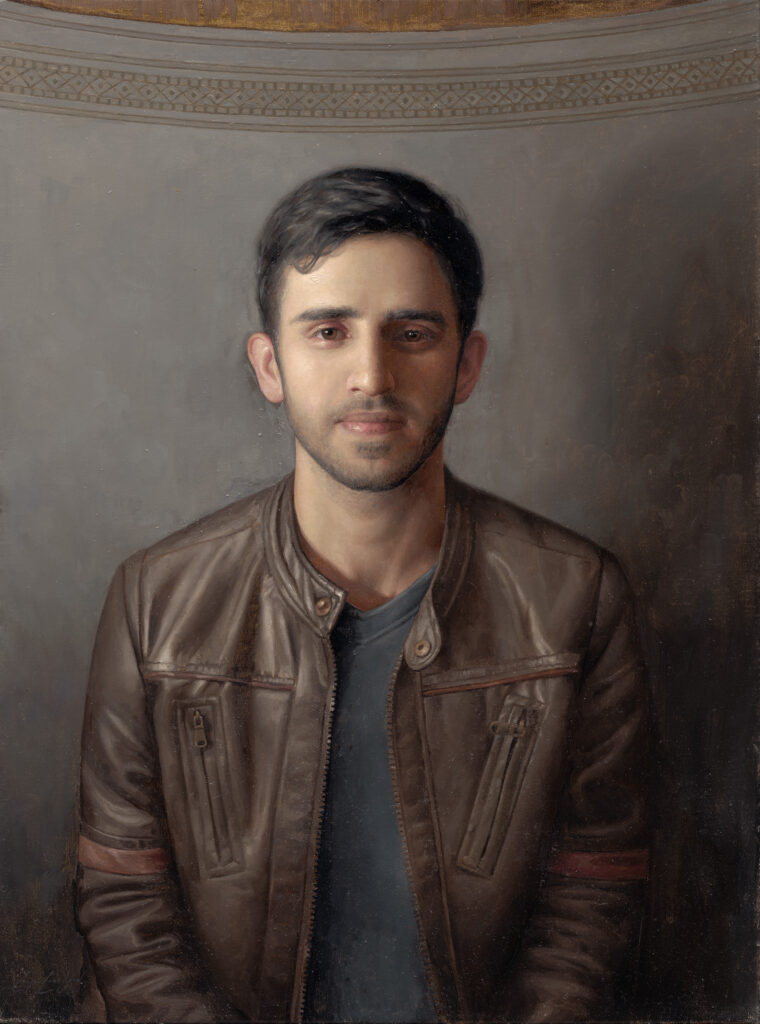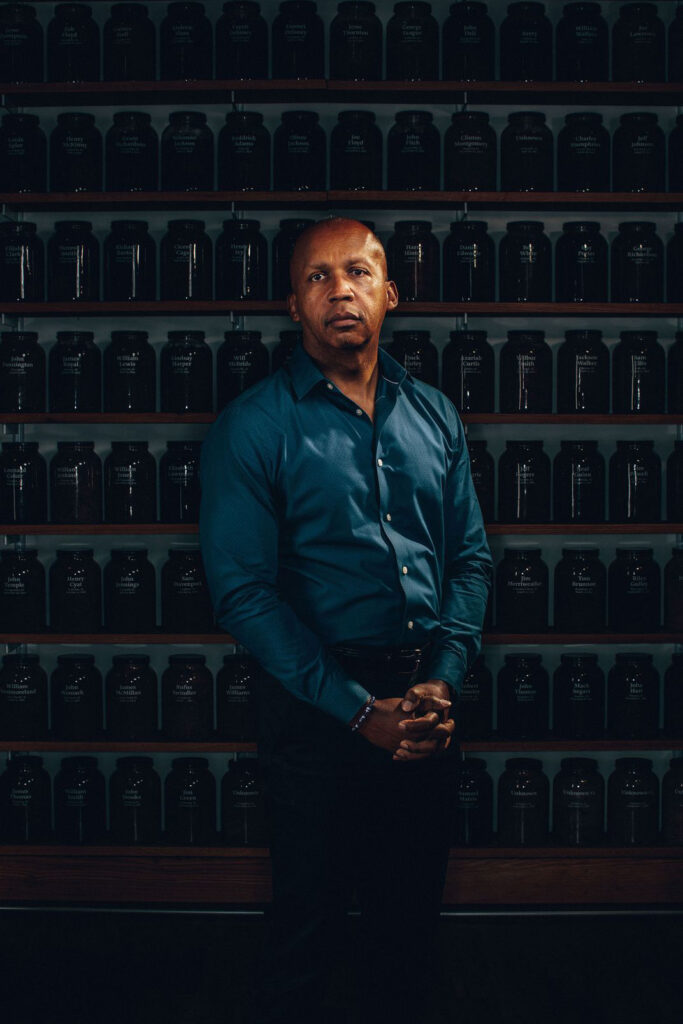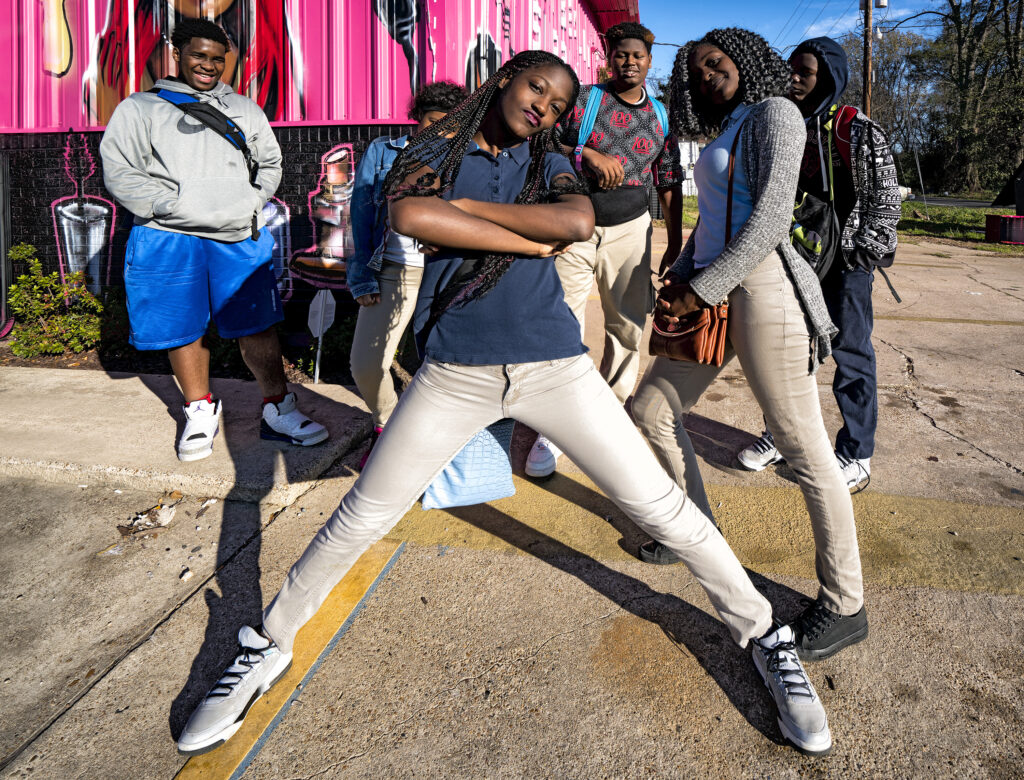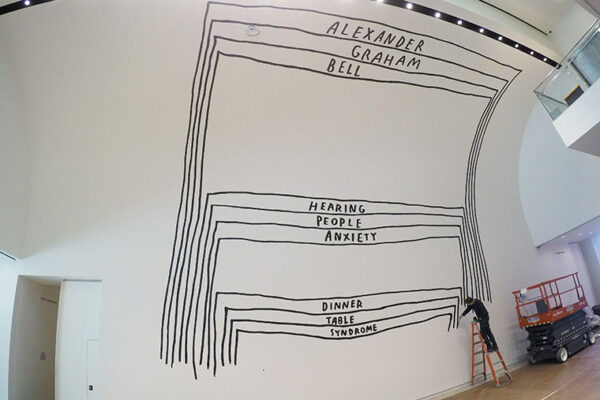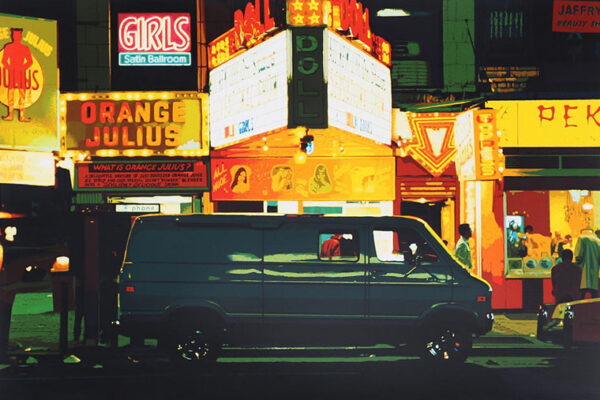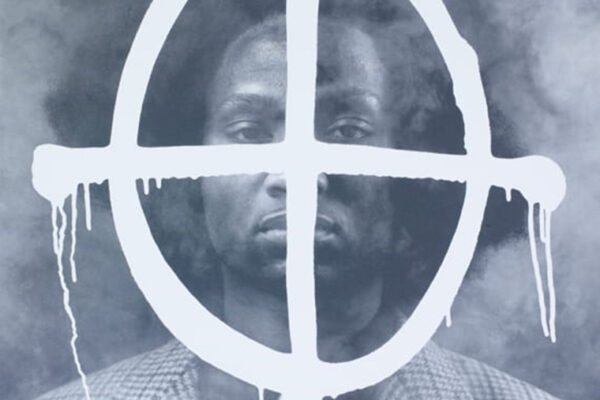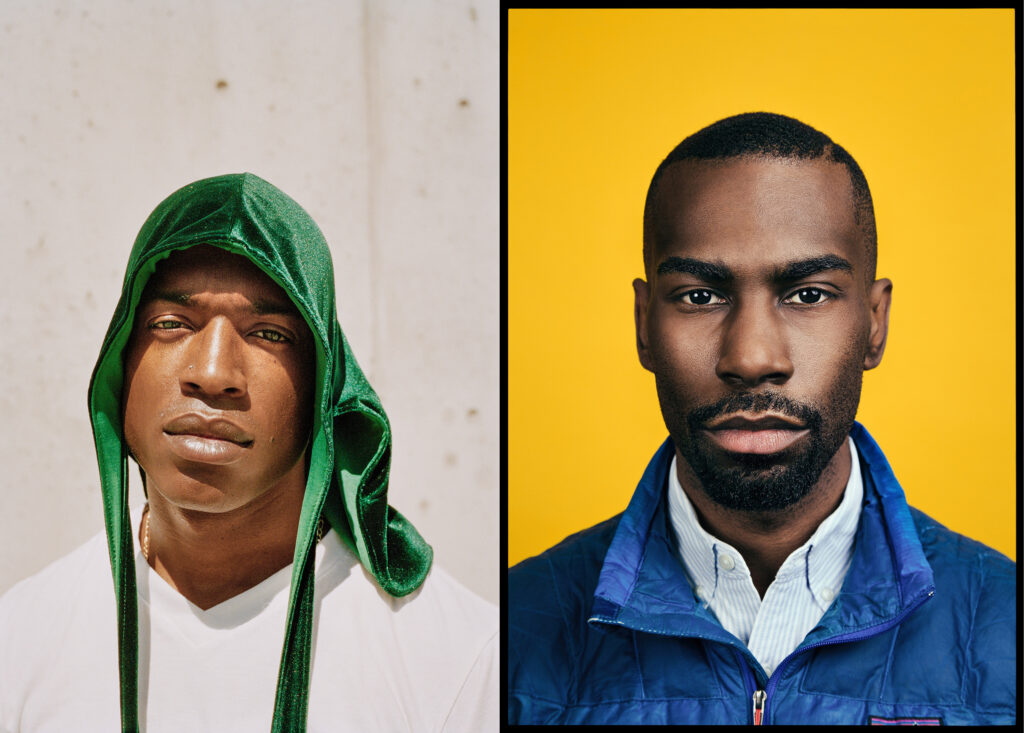
A young man gazes straight into the camera, eyes soft beneath a slightly knit brow. His green velvet durag sparkles like a crown in the sun, its front ties cascading like a Renaissance veil, his crisp white t-shirt bright as the lithe gold chain tucked neatly inside his collar.
In “Black Virgin Mary” (2018), photographer and St. Louis native Adrian Octavius Walker celebrates Black culture and traditions of male beauty while challenging stereotypes about American masculinity. This fall, the Mildred Lane Kemper Art Museum at Washington University in St. Louis will present “Black Virgin Mary” along with 45 other artworks as part of “The Outwin: American Portraiture Today.” Organized by the Smithsonian’s National Portrait Gallery, the exhibition highlights the work of artists from across the country, selected by jury from more than 2,600 entries, whose diverse approaches are expanding the scope of contemporary portraiture.
Launched in 2006, the triennial Outwin Boochever Portrait Competition is named for Virginia Outwin Boochever (1920–2005), a longtime National Portrait Gallery docent who was among the first female commissioned officers in the Navy WAVES program. The competition is open to all artists 18 years and older living and working in the United States. First-prize winners receive a cash award and are commissioned to create a portrait of a living individual for the National Portrait Gallery’s permanent collection. Amy Sherald, who won the Outwin competition in 2016, was subsequently chosen by First Lady Michelle Obama to paint her official portrait for the Portrait Gallery as Sherald’s commissioned work.
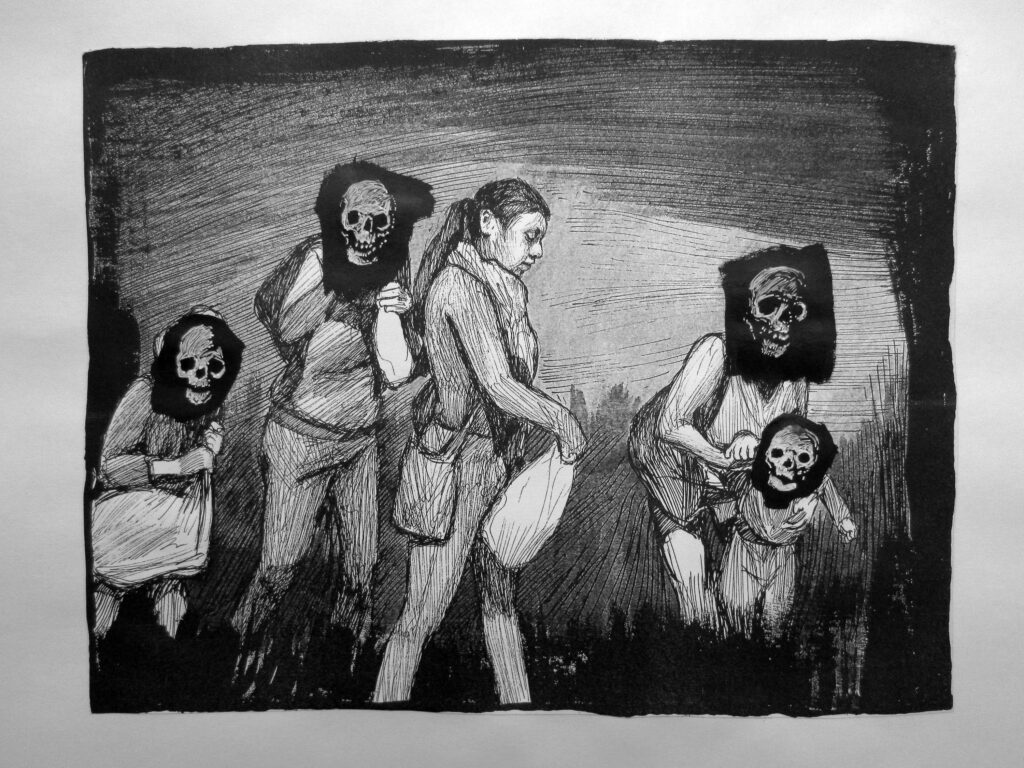
For this iteration of the exhibition, which debuted at the National Portrait Gallery in 2019, artists were invited to respond to current social and political contexts. First Prize was awarded to Hugo Crosthwaite for his “A Portrait of Berenice Sarmiento Chávez” (2018), a stop-motion drawing animation that recounts a young woman’s journey from Tijuana, Mexico, to the United States. Immigration also informs the work of Sam Comen, whose stately environmental portrait of “Jesus Sera, Dishwasher” (2018) pays homage to the nation’s multicultural workforce. Natalia García Clark, in her video performance “Self-Portrait” (2017), explores similar themes of perspective and visibility, striding towards a dusty horizon until she disappears from view.
Several portraits evoke the Civil Rights era and ongoing struggles for social justice. Nekisha Durrett uses small bits of polymer clay to create a pixilated portrait of author and activist James Baldwin. Lava Thomas honors Civil Rights worker Lottie Green Varner, who was arrested during the 1956 Montgomery Bus Boycott, while Deborah Roberts remembers George Stinney Jr., who was exonerated of murder 70 years after his execution at age 14. Photographer Joshua Cogan captures Bryan Stevenson, founder and executive director of the Equal Justice Initiative, flanked by jars of soil collected from lynching sites across the country. Quinn Russell Brown depicts Black Lives Matter activist DeRay Mckesson — a regular presence at the protests in Ferguson, Missouri, after the death of Michael Brown — in his signature blue Patagonia vest.
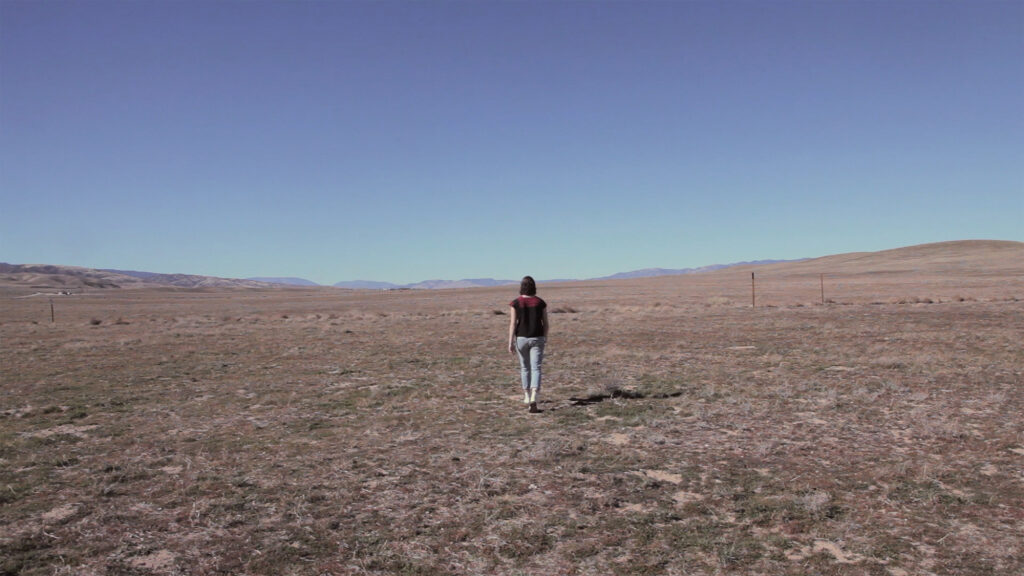
Many portraits investigate themes of vulnerability. Kate Capshaw’s “Unaccompanied” series depicts homeless youth living in Los Angeles. Photographer Sandra Steinbrecher captures a group of Chicago activists marching against gun violence. In “Ajmal, Refugee from Afghanistan” (2016), Carla Crawford portrays a former interpreter for U.S. Special Forces who, under Taliban threat, was forced to flee his home country.
Two finalists of “The Outwin” recently served as Henry L. and Natalie E. Freund Teaching Fellows, a joint appointment sponsored by the Saint Louis Art Museum and Washington University’s Sam Fox School of Design & Visual Arts. New York-based artist Shimon Attie, the 2016-17 fellow, is represented by the video “Night Watch” (2018), which highlights members of the international LGBTQ+ community who have been granted political asylum in the U.S. St. Louis photographer Jess T. Dugan, the 2020-21 fellow, contributes “Jamie and Ann” (2016), a dual portrait examining the vulnerability of the body and the power of Queer identity, desire and connection.
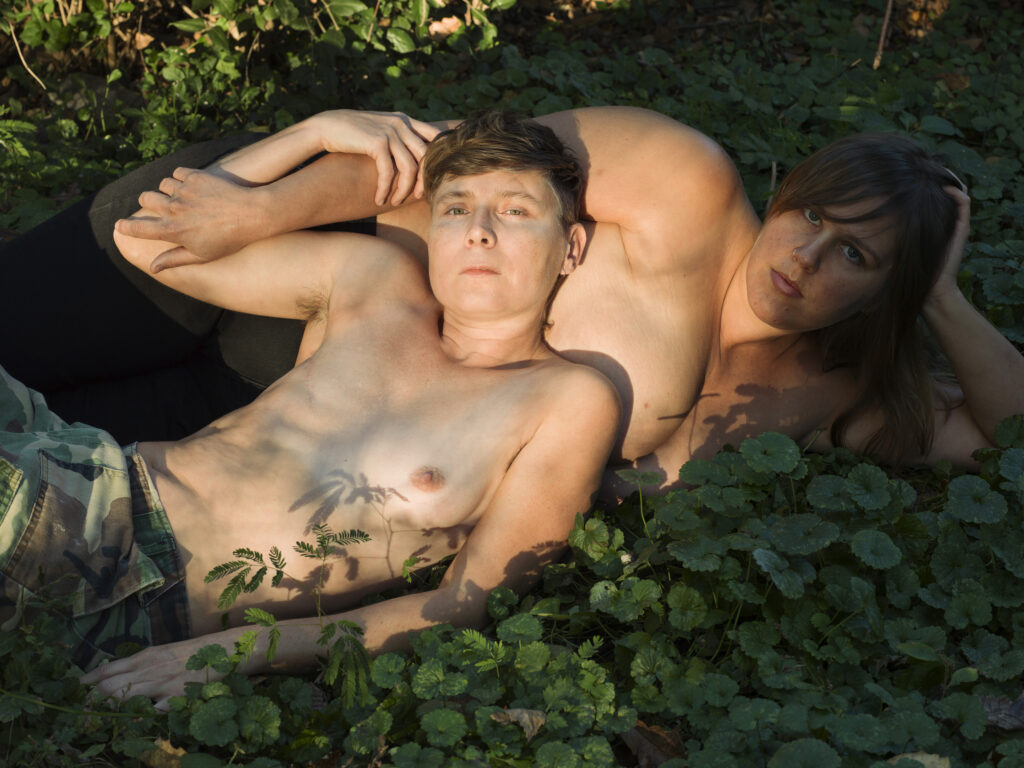
Jurors and catalog
Jurors for the competition included: artist and writer Harry Gamboa Jr., co-director of the program in photography and media at the California Institute of the Arts; Lauren Haynes, then curator of contemporary art at the Crystal Bridges Museum of American Art; Byron Kim, artist and senior critic at the Yale School of Art; Jefferson Pinder, artist and professor of sculpture and contemporary practices at the School of the Art Institute of Chicago; and Brandon Brame Fortune, the Portrait Gallery’s chief curator emerita.
The final two jurors were Dorothy Moss, Portrait Gallery curator of painting and sculpture, who served as director of the 2019 Outwin Boochever Portrait Competition and co-curated the exhibition with Taína Caragol, curator of painting and sculpture & Latinx art and history at the Portrait Gallery. The presentation at the Mildred Lane Kemper Art Museum is curated by Meredith Malone, curator.
Organized by the Smithsonian’s National Portrait Gallery, Washington, D.C., the competition and exhibition are made possible through generous support from the Virginia Outwin Boochever Portrait Competition Endowment. The presentation at the Mildred Lane Kemper Art Museum is made possible by a generous grant from the William T. Kemper Foundation.
The exhibition is accompanied by a fully illustrated catalog with contributions by the originating exhibition curators as well as jurors’ comments.
Visitor information
“The Outwin: American Portraiture Today” will open at the Kemper Art Museum on Friday, Sept. 10, and will remain on view through Jan. 23, 2022. For information about related programs, click here.
The Kemper Art Museum is located on Washington University’s Danforth Campus, near the intersection of Skinker and Lindell boulevards. Visitor parking is available in the Washington University’s East End Garage, which can be entered from Forsyth Boulevard or Forest Park Parkway.
Regular fall hours are 11 a.m. to 5 p.m. Mondays and Wednesdays through Sundays. The museum is closed Tuesdays. For more information, including current COVID-19 precautions, call (314) 935-4523 or visit kemperartmuseum.wustl.edu. Follow the museum on Instagram, Facebook, Twitter or YouTube.
